The hippopotamus is a giant-sized animal of the kingdom Animalia, called a hippo as a short name. In Greek, Hippos are called ‘River Horse’. Endemically, Sub-Saharan Africa is the place where they live.
It is 3rd largest land mammal after the elephant and Rhinoceros. Besides, dolphins, whales, porpoises, etc., are the closest relatives of the hippo family.
They are recognizable by their special-looking shoulder, which is barrel-shaped. Though they seem to have a heavy body and tiny legs compared to the body, the amazing fact is hippos can run faster than you!
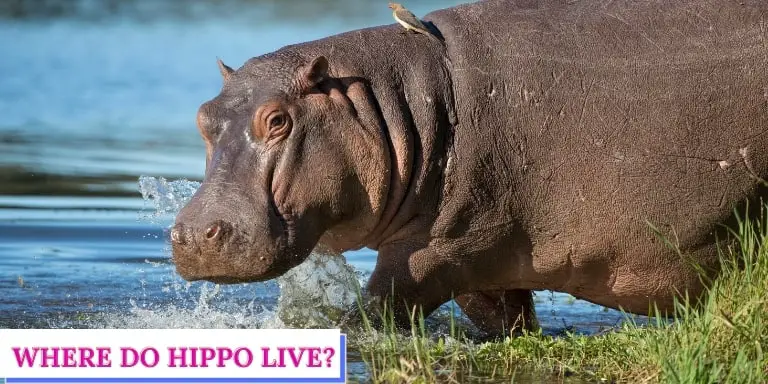
How many types of Hippos are there?
In the ancient period, there were more hippos than there are now.
Living hippo in the present:
Many members of the Hippopotamidae family became extinct due to environmental disasters . But still, there are two species of this family remaining in the world. They are:
The common hippopotamus (Hippopotamus Amphibius): They are larger than the Pygmy hippos. Their nostrils and eyes are protrusive so that they can take a breath and see while submerging under the water.
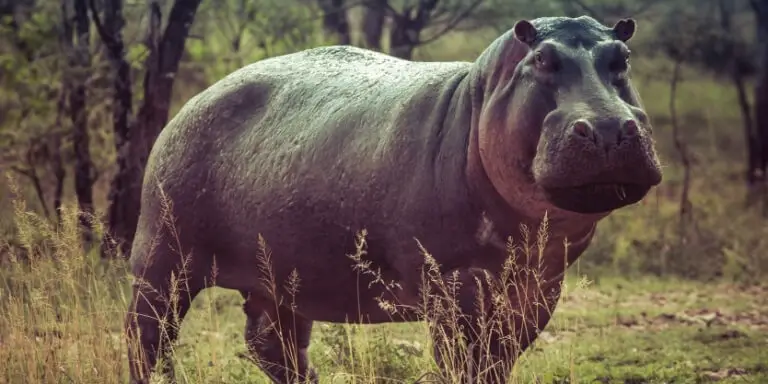
Pygmy Hippopotamus (Choeropsis Liberiensis Or Hexaprotodon Liberiensis): Pygmy hippo has mostly the same characteristics as the common hippo. They don’t have protrusive nostrils or eyes like their cousin hippos.
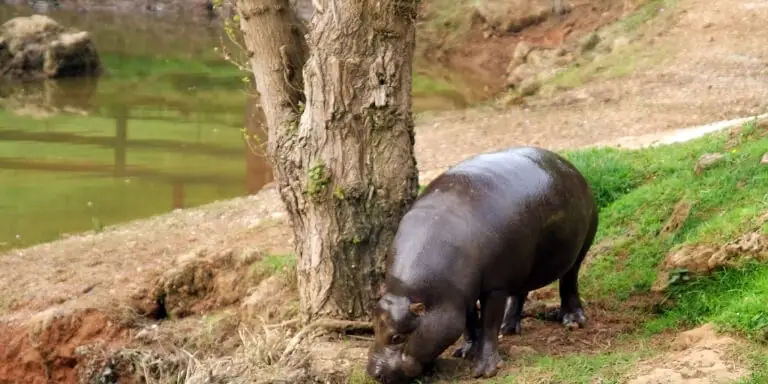
Geographical distribution of hippos in Africa
The geographical distribution of hippos in Africa is primarily focused on freshwater bodies, including rivers, lakes, and swamps. The hippopotamus (Hippopotamus amphibious), aka the common hippo, is a semi-aquatic mammal whose range is mostly confined to sub-Saharan Africa, although the species once had a more extensive historical distribution that included parts of North Africa and the Nile River.
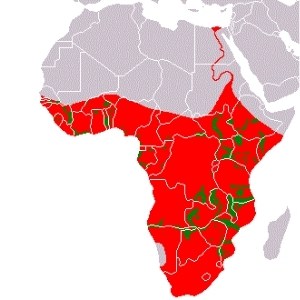
Historically, hippos had a broader range that extended into northern Africa and along the Nile River into Egypt. Ancient Egyptian artwork and literature often depicted hippos, which were once common in the region. However, due to hunting and habitat loss, they are no longer found in northern parts of Africa.
Today, hippos are predominantly found in eastern and southern Africa, though some populations also exist in western Africa. The largest populations are found in the following regions:
East Africa: Countries such as Tanzania, Kenya, and Uganda host some of the largest populations of hippos. In Tanzania, the Serengeti and Selous Game Reserve are key areas. In Uganda, the banks of the Nile River, particularly near Murchison Falls National Park, are known for their hippo populations.
Southern Africa: Hippos thrive in Zambia (especially around the Luangwa River), Zimbabwe, and Botswana. The Okavango Delta in Botswana is a crucial habitat for hippos, as the seasonal flooding provides an ideal environment for the species.
West Africa: In this region, hippo populations are more fragmented due to habitat loss and human settlement. Countries like Mali (particularly along the Niger River), Guinea, and Senegal still have smaller, scattered populations. Mali is home to an isolated population in the Inner Niger Delta, despite the region’s increasing desertification.
Central Africa: Democratic Republic of Congo (DRC) has hippos along the Congo River and in the lakes and swamps of the region, though civil unrest has severely impacted their numbers.
Where do pygmy hippos live?
The pygmy hippopotamus (Choeropsis liberiensis or Hexaprotodon liberiensis) is a rare, semi-aquatic mammal native to the forests and swamps of West Africa. This species is smaller and less social than the common hippopotamus and is classified as “Endangered” on the IUCN Red List. Pygmy hippos are elusive creatures, primarily nocturnal, and adapted to dense forest habitats, making their distribution and population difficult to study.
Historically, the pygmy hippo may have had a broader distribution across the lowland forests of West Africa. However, due to habitat loss and human encroachment, the range has significantly contracted over the years. The remaining populations are now fragmented and restricted to isolated areas of forest.
Currently, pygmy hippos are limited to a small region in West Africa, with the largest populations found in the following countries:
Liberia: This is considered the stronghold of the pygmy hippo population, with the majority of the global population living here. They inhabit forested areas along rivers and streams, with key habitats located in the country’s southeastern rainforests, particularly in areas like Sapo National Park and Lofa-Mano National Park.
Sierra Leone: Pygmy hippos are found in the Gola Rainforest and other forested regions along the Liberian border. While pygmy are less abundant here than in Liberia, they are nonetheless a crucial part of the country’s biodiversity.
Guinea: Although fewer in number, pygmy hippos can be found in the forested areas of Guinea, particularly near the borders with Liberia and Sierra Leone. These areas often overlap with protected lands, which helps in conserving the pygmy hippo populations.
Ivory Coast (Côte d’Ivoire): Small populations of pygmy hippos have been reported in the Taï National Park, which provides a critical habitat for the species. However, habitat fragmentation and human activity have made these populations increasingly isolated.
In what climate does a hippo live?
Animals have several types of adaptations to living. Hippos are no different from that. The climate called tropical savannah is the best for them to live.
You can say this is a wet-dry tropical climate also. That means a place where a combination of dry and wet weather exists is a better place for hippos.
These places are hot, but there is a certain period when the weather becomes cool. It is an exception for the hippos who live in the tropical rainforest, as the cloudburst takes place throughout the year.
Habitat
Hippos love to plunge their body through the whole day underwater. That’s why they prefer shallow water bodies like lakes, rivers, mangrove swamps, etc. Mostly sweet water is preferable to them. But sometimes, they also drown in salty water.
Interestingly, they get up from the water at night and wander around the grassy pasture to feed themselves, which is called the hippo’s lawn.
The reason behind this grazing at night is that the night’s climate helps them keep their skin moist, and they can avoid the extreme heat of the sun of Africa.
When they don’t eat, they start to take a marathon walk of about 5/6 hours through the lowland.
Unlike the common hippo, pygmy hippos are forest dwellers and are adapted to the dense, humid environments of tropical forests.
They are closely associated with rivers and streams, as they rely on water for thermoregulation and protection from predators.
However, pygmy hippos do not depend on water bodies as heavily as their larger relatives and are more likely to be found in areas with dense vegetation, which provides cover and food sources.
Do hippos live in the jungle?
The giant hippos do not live in jungles. They inhabit open savannas and grasslands, where they stay near large rivers, lakes, and wetlands. These areas provide the water bodies they depend on for thermoregulation and protection from the sun.
Pygmy hippos are adapted to the dense, tropical rainforests and swamps of West Africa, which are often referred to as jungles. They prefer areas with thick vegetation near rivers, streams, and swamps. Unlike the common hippos, they spend much of their time in the forest, where they rely on dense cover for protection and forage on various types of vegetation. The canopy in these forests provides the cool, shaded conditions that they need to avoid overheating, as they lack sweat glands.
Do hippos live outside of Africa?
Hippos are native only to Africa, where they are found in sub-Saharan regions. However, through an unusual series of events, hippos now inhabit a region in Colombia, South America, and this population has become a topic of much ecological and conservationist debate. Here’s a detailed exploration of how hippos came to live outside Africa, specifically in Colombia, and why they don’t naturally exist elsewhere in the world.
Pablo Escobar’s hippo import to Colombia
In the late 1970s and 1980s, notorious Colombian drug lord Pablo Escobar amassed an extensive private zoo on his estate, Hacienda Nápoles, near the town of Puerto Triunfo. Among the exotic animals he imported illegally were four hippos, a male and three females from Africa. Escobar’s estate was seized by the Colombian government after he died in 1993. While most of the animals were relocated, the hippos were left behind due to the difficulty and cost of moving them.
Since then, the hippos escaped into the nearby Magdalena River and surrounding areas. Over the decades, they thrived in Colombia’s tropical climate, which provides an environment similar to their native African habitats, including ample freshwater sources and warm temperatures.
Without natural predators, their population has grown significantly. Today, authorities estimated that there are 169 hippos in the wild of Colombia, it could reach up to 1000 by 2035 if no measures are taken.
Ecological impact of the Colombian hippo population
The “Cocaine Hippos,” as they are sometimes called, have become a controversial topic. While some residents and tourists view them as an attraction and even a symbol of resilience, their presence poses significant ecological challenges:
Ecosystem Disruption: Hippos are not native to South America and have begun to alter the Magdalena River ecosystem. They consume large amounts of vegetation and compete with native species for resources, and their waste affects water quality by increasing nutrient levels, potentially leading to harmful algal blooms.
Impact on Local Species: Hippos’ aggressive behavior can pose a threat to native animals. For instance, hippos sometimes clash with local fish species and aquatic mammals, disrupting breeding areas and feeding grounds.
Human-Wildlife Conflict: Hippos are highly territorial and can be dangerous to humans. There have been incidents of hippo-human interactions that have raised safety concerns for communities near the Magdalena River.
In response to the growing hippo population, the Colombian government and conservation groups have explored various control measures, including sterilization and relocation efforts.
Why hippos don’t live outside Africa naturally
Historically, hippos are native only to sub-Saharan Africa, where they evolved to live in specific ecosystems that provide both water and grasslands. Their natural distribution has been limited due to several factors:
Climatic and Habitat Requirements: Hippos depend on a warm climate with abundant water sources to regulate their body temperature and avoid dehydration. These conditions are not widely available outside Africa. Even if they exist, hippos would need large, undisturbed water bodies to thrive, which are scarce in other parts of the world.
Natural Range Limitations: Hippos are large, non-migratory animals that have never been capable of long-distance dispersal. Unlike smaller animals that can spread across different continents, hippos are restricted by their size and aquatic needs, which limit their range to accessible, connected waterways within Africa.
Lack of Suitable Habitats: Outside Africa, few regions offer the combination of freshwater systems and open grasslands that hippos require. Many parts of the world have ecosystems that are unsuitable for hippos due to either climate, terrain, or lack of food resources.
Do hippos live in the US?
No, hippos do not live naturally in the United States. There are no wild populations of hippos in the U.S. They depend on specific environmental conditions—warm climates with abundant freshwater sources and grassy areas for grazing—that are not widely available in the United States.
However, there was once an unusual proposal in the early 20th century to introduce hippos into the U.S. as a means of addressing meat shortages and controlling invasive plants. Known as the “American Hippo Bill,” it was supported by Congressman Robert Broussard in 1910.
He proposed importing hippos to Louisiana to live in the swamps and bayous, where they would provide a new meat source and help control invasive water hyacinth plants. The proposal garnered attention but was ultimately rejected, so the plan never came to action.
Today, hippos can only be found in U.S. zoos, aquariums, and animal parks, where they live in controlled environments that replicate their natural habitats. These captive populations play a role in education, conservation, and research, but there are no free-ranging or wild hippos in the U.S.
Why are hippos becoming extinct?
The hippo is going to be an extinct animal, according to scientists’ research. Humans brutally kill them for their meat, skin, and teeth. Besides, the conflict with people also decreases their number.
According to the African Journal of Ecology, hippos are becoming a part of extinct animals because of the traders who have high allurement for hippo tusks.
Threats to hippos
Hippos face several significant threats that impact their survival:
1. Habitat Loss: Rapid agricultural expansion has led to a severe loss of habitat for hippos. These animals require large bodies of water to keep their skin hydrated, as well as extensive lowland areas for grazing. However, many of these areas are increasingly being converted for farming, leaving them with fewer suitable environments.
2. Human Encroachment: The expansion of human settlements has drastically reduced open land available for hippos. As people build closer to rivers and lakes, they are forced into smaller areas, leading to more frequent conflicts with humans.
3. Poaching: Hunting remains a significant threat to hippos, as people are poached for their meat and ivory teeth. This illegal activity contributes to declining hippo populations and threatens the species with extinction.
4. Human-Wildlife Conflict: In some regions, hippos are killed by farmers and local communities who see them as a threat to crops and property. Hippos are highly territorial and can be dangerous, which leads people to take lethal measures to protect their land.
5. Impact of Civil Conflicts: Civil wars and unrest in countries such as Liberia, Guinea, and Sierra Leone have taken a toll on hippo populations. Armed conflicts often disrupt conservation efforts, reduce funding, and lead to poaching and habitat destruction as people turn to natural resources for survival.
6. Small Population Sizes: Many hippo herds are now highly fragmented, with family groups numbering fewer than 50 individuals. This fragmentation can limit genetic diversity and reduce the species’ resilience to environmental changes and diseases.
As a result, they are now under great threat of being killed and lost from the earth very soon.
Hippopotamus Conservation
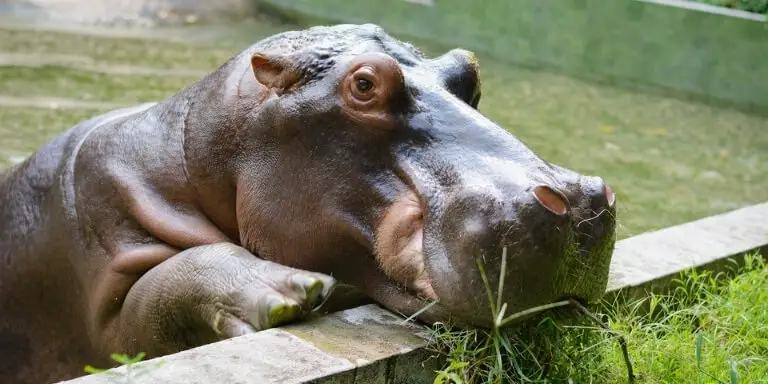
According to the data from IUCN in 2016, the hippo is counted as a vulnerable animal.
Currently, the number of hippos is between 115,000 to 130,000 in numbers. So, it is understandable that day by day, hippos are falling into danger, and they are becoming enlisted as endangered animals.
Hippopotamus need conservation as they are in a stage of losing from this earth.
Global Conservation and the Ugandan Conservation Foundation, the Ugandan Waterways Project kept an important step to make the conservation.
Rangers of the Uganda Wildlife Authority were permitted to build shelters to monitor the poachers to save this extinct animal at Lake Edward and Lake George.
Rangers have the power to arrest the poachers who take illegal acts and forfeit the stuff from them. This kind of initiative can save this species from killers and poachers.
Conclusion
This African wild species has a significant role in maintaining the ecosystem. Once Africa was the land of hippopotami now turned into a place that is risky for them. To improve ecological balance, we have to save these instinctive animals and make more conservations for them.
Otherwise, our next generation only will hear the story of the hippopotamuses which will be lost with the wave of our unconscious behavior.
You might also be interested in:
